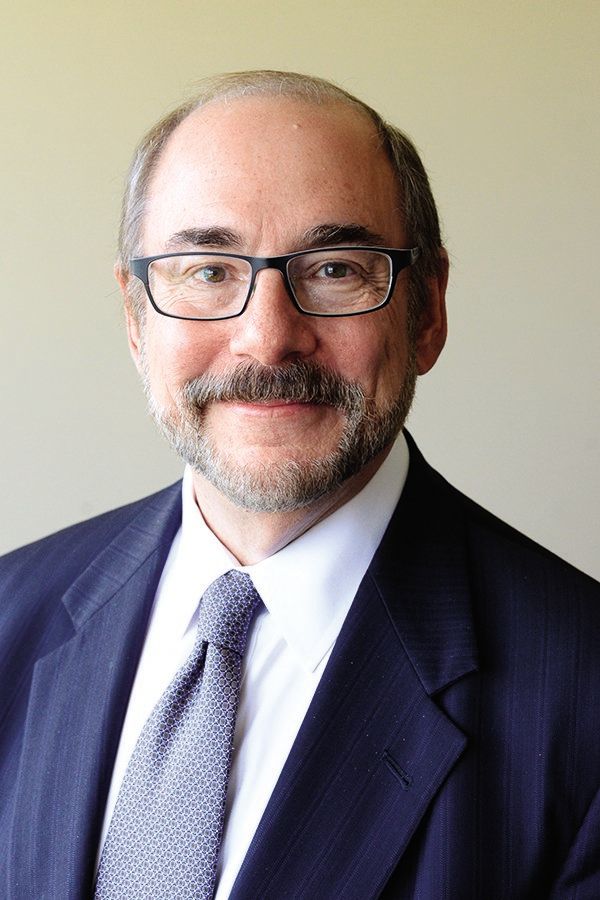Publication
Article
Psychiatric Times
Is Kansas a Real Place?
Author(s):
We listen carefully and use our empathic ability to both understand and provide support to our patients. This work is often at the heart of helping them become more reflective and gain the capacity to make adaptive changes in their internal realities.
Allan Tasman, MD

From the Editor
Over my summer vacation, I found myself thinking a good deal about the nature of reality, more than usual, because of two books I read. The first, Dark Matter by Blake Crouch, is a sci-fi novel about a scientist who becomes trapped in a series of alternate universes trying to find his way home. The second, is What is Real?, aptly titled by Adam Becker, PhD, an astrophysicist. This non-fiction work explores the century-old debate among theoretical physicists about the nature of the universe (or universes). On one side were the adherents of Einstein’s theory of special relativity and on the other were the quantum mechanics group led by Niels Bohr.
The debate focused in part on whether phenomena that are not observable, but only hypothesized, should be used in theory building and testing. The evolution of these discussions led to sophisticated mathematics support for theories about the existence of alternate co-existing realities (universes). The questions about knowable reality clearly resonated with me as a psychiatrist dealing with such questions in the clinical setting.
“Toto, I’ve a feeling we’re not in Kansas anymore.”
-Dorothy, in The Wizard of Oz
Physics was my least favorite subject in college, which is somewhat surprising to me since I’ve been a fan of science fiction since I was in fourth grade. I guess discussions about the nature of the universe and reality turn out to be more enjoyable to me when my grade in physics isn’t affecting my acceptance into medical school. After all, the question of whether light is a wave or a particle is still pretty fascinating. At times it behaves like a wave and sometimes like a particle but doesn’t behave like both simultaneously, at least according to Dr Becker.
This duality of light’s nature has allowed me to spend many hours over the years watching TV, the technology of which relies on light functioning in both ways at different instants. My TV viewing has included annual screenings of The Wizard of Oz both with or without my kids. I mention the Wizard of Oz in case you’re wondering about the title of this column.
I’m doing my best to make sense of the current preoccupation with what actually is consensually determined reality as embodied in our current political and communications environment. But, I’ve about given up on this major cultural phenomenon, which is affecting anyone with a TV, cell phone, computer, or who reads print media. I find myself turning instead to thinking about something that makes sense to me, the work we do to understand our patients’ internal realities and how in our own work we try to discern clues about that internal reality only from what we learn from them since we have no other tools available.
The work continually involves thinking about the tension between consensually agreed-upon external reality and our patients’ internal reality. That task usually requires a good deal of effort on our part. And, we often rely on research findings to help us have a frame of reference from which to work. But even that turns out to be complicated, and we can’t always assume those research findings are real.
A recent brief report in Science1 emphasizes this point. The report highlights recent studies, which reveal that published results of research are often influenced by the investigator inappropriately altering the research protocols or the initial hypotheses during the research study. The motivation was found tied to the researchers’ wishes to produce results that reached statistical significance in support of their hypotheses-whether they were actually the initial ones or added later during the research.
While I’m unaware that his theory has been tested using modern research techniques, David Winnicott’s2 1965 article, “Ego Distortion in Terms of True and False Self,” highlights an intrinsic quality of human behavior that makes it so difficult to fully understand another person’s internal world. To Winnicott, social adaptation involves the evolving development of boundaries between what is revealed to another person, what he called the false self, and the internal mental reality of the individual, what he called the true self.
Although using the term “false self” might imply pathology, Winnicott didn’t see this aspect of mental function as innately maladaptive; in fact, he believed the opposite. He believed the false self was, except in situations of significant psychopathology, the adaptive socially interactive aspect of our selves we present to others. From this perspective, it’s easy to see why psychotherapeutic work is so difficult: It involves finding the hidden true self, often hidden not just from the therapist but to some extent from the patient as well.
Our work with psychotic patients also requires a good deal of work in discerning the internal reality hidden by the veil of psychotic cognition. A patient I’ve discussed and written about before told me, in response to my question about his current life, that he spent all his time travelling in outer space in his invisible (to others) one-person space ship.
In my interview with that specific patient, it didn’t take much time or effort to understand that he was telling me that in his real life he felt lonely and isolated. We know that often it’s much harder to decipher a communication from someone who is psychotic.
The psychotherapeutic work we do with our patients involves helping them alter their internal mental reality to one that allows them to think, feel, and/or behave in ways that are more adaptive for them. Of course, unlike in sci-fi or spy novels, we have no unusual powers, complicated machinery, or the ability to alter the physical world to accomplish these changes.
But we do listen carefully and use our empathic ability to both understand and provide support. This work is often at the heart of helping our patients become more reflective and gain the capacity to make adaptive changes in their internal realities. It’s incredibly gratifying but arduous, and it’s a good thing that we can usually take some time in the summer to relax.
By the way, before anyone starts posting on our website that I’m biased against Kansas, let me assure everyone that’s not my belief. My mom was born in Kansas City (of course you’re asking which Kansas City, the one in Missouri or the one in Kansas), and I’ve spent a lot of time there over the years visiting my grandmother, aunts and uncles, and cousins. I’m as certain as can be that by any common experience of reality, it’s a real place.
For those of you who know The Wizard of Oz movie (spoiler alert for those who don’t-if there are any), Oz turns out to be just a dream of Dorothy’s. And that dream is full of day residue, and manifest and latent content, with a happy ending that makes every child and most psychanalysts happy.
What seems to be Dorothy’s reality turns out not to be real at all unless our dream worlds are real outside our minds. Phillip K. Dick, the science fiction writer whose ongoing concern was the nature of reality, often wondered about the reality of our internal world and how it could alter external reality. He would be having a field day in our current world were he alive and still writing. It is, though, entirely possible that, in an alternate reality, he still is.
YOUR THOUGHTS
Send your comments to Dr Tasman
at editor@psychiatrictimes.com
References:
1. News at a Glance. Sloppy science more widespread. Science. July 27, 2018;361:315.
2. Winnicott DW. Ego distortion in terms of true and false self. In: Winnicott DW, Ed. The Maturational Processes and the Facilitating Environment: Studies in the Theory of Emotional Development. London: Karnac Books; 1960:140-152.







